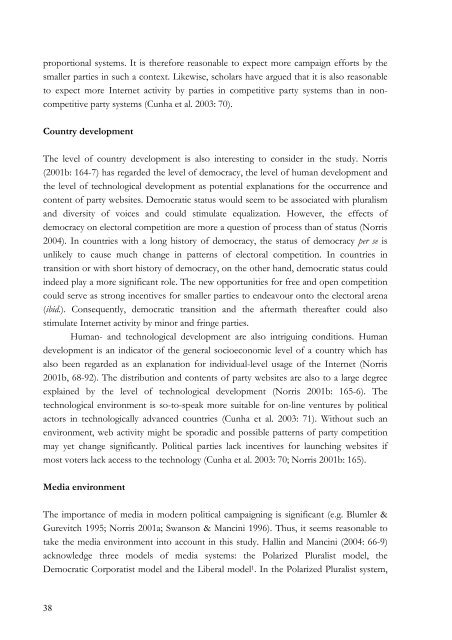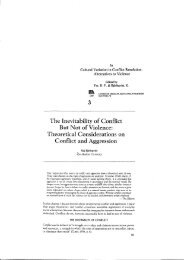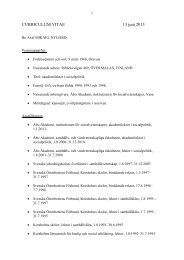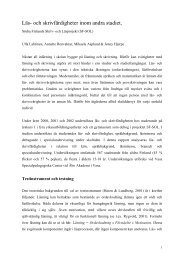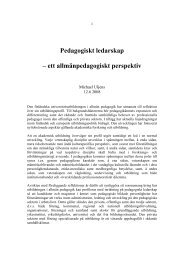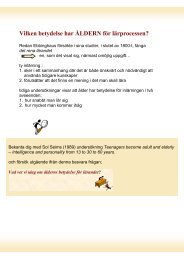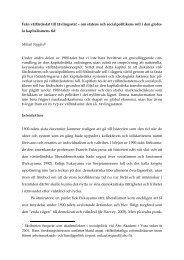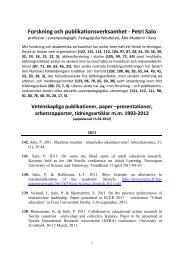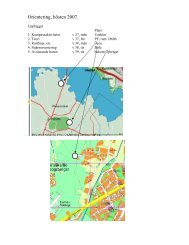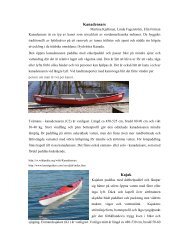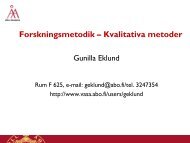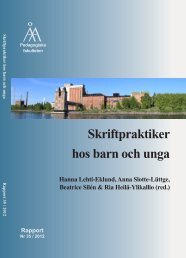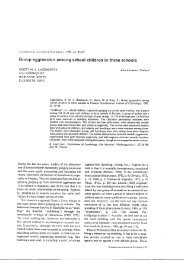Parties, Candidates and Citizens On-Line - Åbo Akademi
Parties, Candidates and Citizens On-Line - Åbo Akademi
Parties, Candidates and Citizens On-Line - Åbo Akademi
Create successful ePaper yourself
Turn your PDF publications into a flip-book with our unique Google optimized e-Paper software.
proportional systems. It is therefore reasonable to expect more campaign efforts by the<br />
smaller parties in such a context. Likewise, scholars have argued that it is also reasonable<br />
to expect more Internet activity by parties in competitive party systems than in noncompetitive<br />
party systems (Cunha et al. 2003: 70).<br />
Country development<br />
The level of country development is also interesting to consider in the study. Norris<br />
(2001b: 164-7) has regarded the level of democracy, the level of human development <strong>and</strong><br />
the level of technological development as potential explanations for the occurrence <strong>and</strong><br />
content of party websites. Democratic status would seem to be associated with pluralism<br />
<strong>and</strong> diversity of voices <strong>and</strong> could stimulate equalization. However, the effects of<br />
democracy on electoral competition are more a question of process than of status (Norris<br />
2004). In countries with a long history of democracy, the status of democracy per se is<br />
unlikely to cause much change in patterns of electoral competition. In countries in<br />
transition or with short history of democracy, on the other h<strong>and</strong>, democratic status could<br />
indeed play a more significant role. The new opportunities for free <strong>and</strong> open competition<br />
could serve as strong incentives for smaller parties to endeavour onto the electoral arena<br />
(ibid.). Consequently, democratic transition <strong>and</strong> the aftermath thereafter could also<br />
stimulate Internet activity by minor <strong>and</strong> fringe parties.<br />
Human- <strong>and</strong> technological development are also intriguing conditions. Human<br />
development is an indicator of the general socioeconomic level of a country which has<br />
also been regarded as an explanation for individual-level usage of the Internet (Norris<br />
2001b, 68-92). The distribution <strong>and</strong> contents of party websites are also to a large degree<br />
explained by the level of technological development (Norris 2001b: 165-6). The<br />
technological environment is so-to-speak more suitable for on-line ventures by political<br />
actors in technologically advanced countries (Cunha et al. 2003: 71). Without such an<br />
environment, web activity might be sporadic <strong>and</strong> possible patterns of party competition<br />
may yet change significantly. Political parties lack incentives for launching websites if<br />
most voters lack access to the technology (Cunha et al. 2003: 70; Norris 2001b: 165).<br />
Media environment<br />
The importance of media in modern political campaigning is significant (e.g. Blumler &<br />
Gurevitch 1995; Norris 2001a; Swanson & Mancini 1996). Thus, it seems reasonable to<br />
take the media environment into account in this study. Hallin <strong>and</strong> Mancini (2004: 66-9)<br />
acknowledge three models of media systems: the Polarized Pluralist model, the<br />
Democratic Corporatist model <strong>and</strong> the Liberal model 1. In the Polarized Pluralist system,<br />
38


